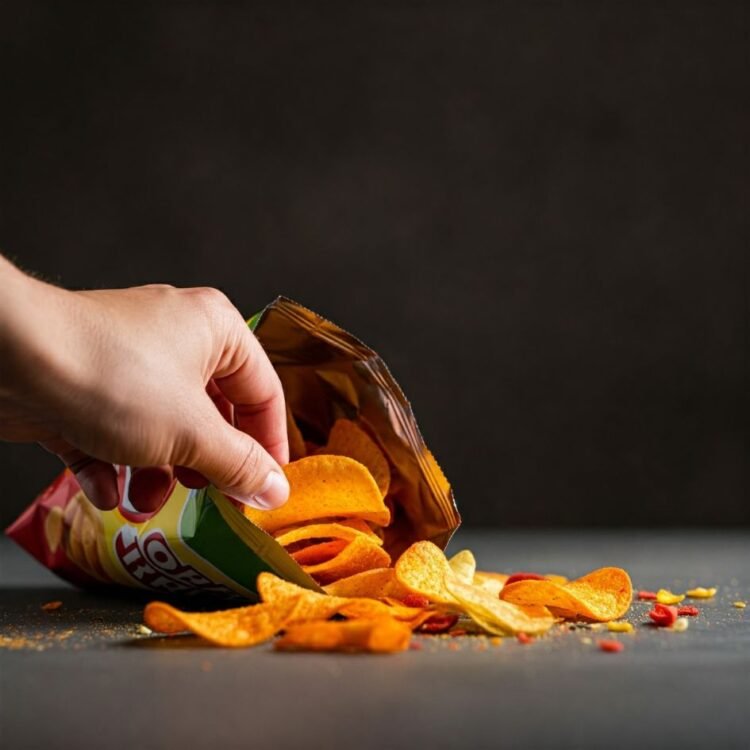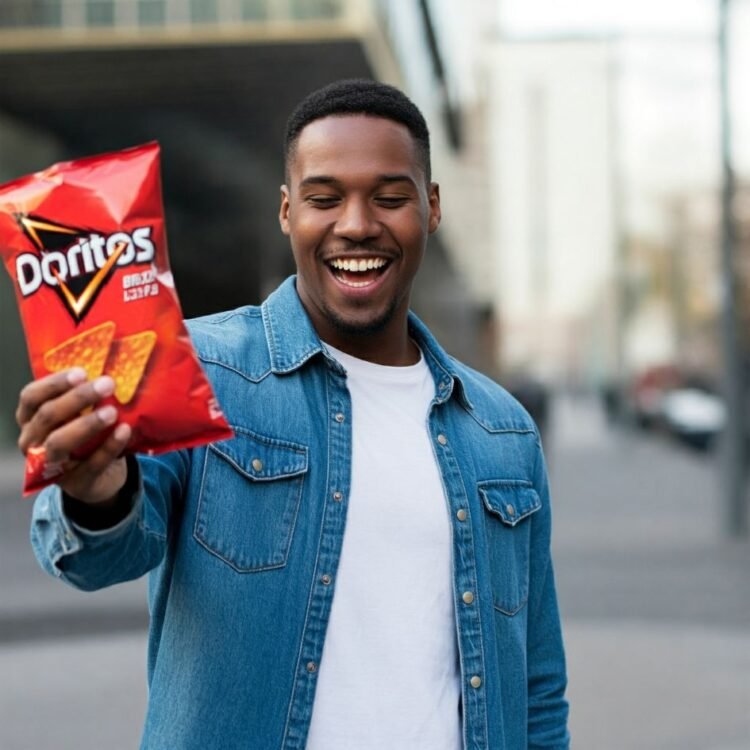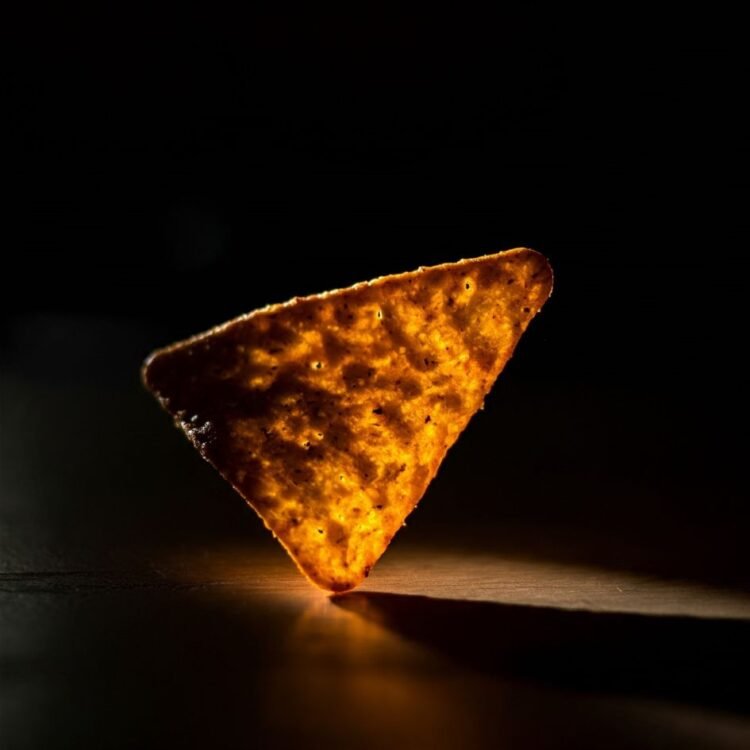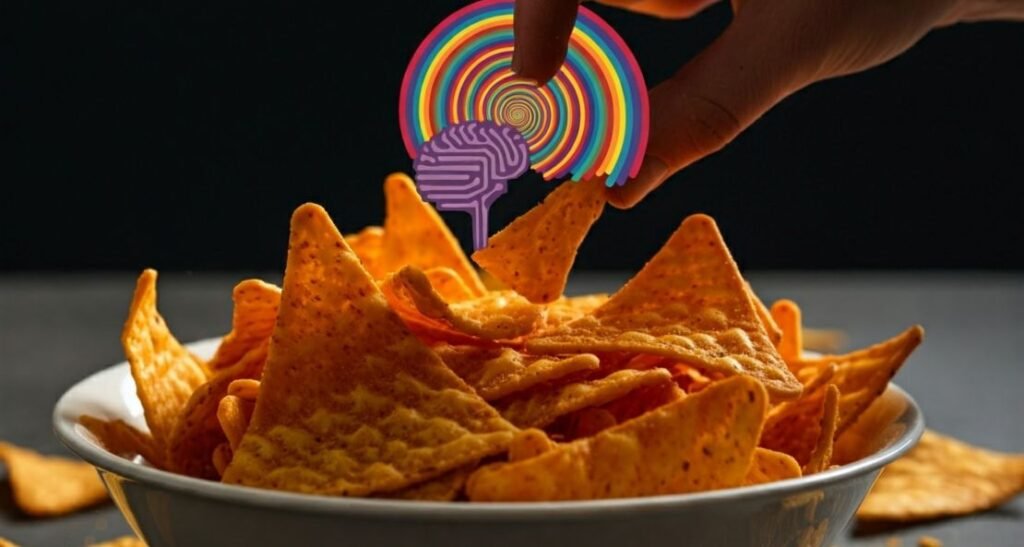There’s a new theory sweeping TikTok, and it’s got nothing to do with the latest dance trend or filter craze.
Instead, it’s all about the sneaky allure of life’s little addictive habits—the kind we know are empty but keep coming back to anyway. Meet the Dorito Theory. Yes, like the snack.
The theory suggests that just as we can’t stop munching on that bright orange triangle (even though we know it’s probably a bad idea), we’re drawn to behaviours that give us a quick hit of pleasure but leave us wanting more.
So why does this concept have everyone scrolling, snacking, and, let’s be honest, staying in that dead-end situationship?
Let’s dig into Dorito Theory, its quirks, its criticisms, and what it says about our odd obsession with things that don’t really satisfy.
Snack-Worthy Habits: Why We Love the Quick Fix

At its simplest, Dorito Theory is all about instant gratification—the kind that feels good at the moment but doesn’t exactly leave you full. TikTok user Celeste Aria brought this idea to life, comparing life’s unsatisfying pursuits to eating Doritos.
The snack might taste great on the first crunch, but it’s not exactly filling.
Similarly, scrolling through social media, binging on a cheap thrill, or even dating someone who’s “meh” can feel satisfying in bursts but rarely leads to lasting contentment.
Ever opened Instagram for a “quick check” and found yourself 30 minutes deep, watching a cat solve a Rubik’s cube?
That’s Dorito Theory in action. And it’s not just social media. The theory dives into the human brain’s dopamine system, which rewards quick, low-effort rewards but keeps us coming back for more.
@celeste.aria_ Have you heard of Dorito Theory? What types of things and experiences falls under it for you? #doritotheory #dopamine #addictivebehaviour #howtostoprotting #rottingtiktok #impulsivebehaviour #howtousetiktokless #howtoeathealthy #howtomotivateyourself #howtoimprove #thoughtexperiment #serotonin #mentalhealth #neuroscience #neurodivergent #adhd ♬ original sound – Celeste Aria
According to Aria, we’re wired to chase these tiny hits of joy—even if they’re the mental equivalent of empty calories.
But Dorito Theory isn’t just about food or fun. It’s grown legs (or maybe crumbs?) in its journey across TikTok, turning into a framework for understanding why we stick with so many unfulfilling habits.
From toxic relationships to mindless scrolling, it’s all in the same bag of empty crisps.
The Crispy Appeal of “Dorito Boyfriends”

While Doritos might be the perfect metaphor, the theory goes beyond food.
TikTok has taken Dorito Theory into the realm of relationships, with users calling out “Dorito boyfriends” who offer temporary excitement but little else.
This kind of fling or “situationship” might be fun, but just like that last handful of nacho cheese crisps, it leaves you wishing for something more substantial.
Psychologists say this isn’t just TikTok fluff, either. Our brains release dopamine in response to quick bursts of pleasure, like the thrill of a casual relationship or even the validation from a “like” on a post.
It’s addictive, even though it’s…well, a bit empty in the long run.
And, according to one study, this cycle can keep people stuck in these patterns of seeking short-term rewards, hoping one day it’ll feel satisfying.
But here’s where the theory gets interesting: the way we gravitate toward these “Doritos” of life often says more about our underlying needs than about the habits themselves.
Are we chasing a hit of pleasure because we’re bored?
Are we staying with someone because the alternative feels a little too lonely? Turns out, Dorito Theory has layers.
Dorito or Steak? Little Treat Culture vs. Lasting Fulfilment
Not everyone’s thrilled about the Dorito Theory, though. Some critics argue that it feels a bit judgemental, particularly for people who don’t have a choice in what they consume or how they spend their time.
One writer even argued that it borders on “shaming” people who turn to small, affordable comforts. Let’s be real—sometimes, a cheap thrill is just what the day ordered.
Quick question: What’s your go-to de-stresser? If it’s a relaxing hobby or going for a walk, that’s a “steak” habit.
But if it’s a random social media dive, you might be looking at a “Dorito” habit. Does that mean one’s better than the other? Not always.
We’re not all out here with endless budgets for “nutrient-rich” choices, and some critics say that framing these behaviours as “bad” overlooks the fact that a small indulgence, like a bag of crisps or a Netflix binge, can be a form of self-care.
Not every little treat is an addiction waiting to happen; sometimes, it’s just a necessary pick-me-up.
The takeaway? Just because something’s an instant pleasure doesn’t mean it’s inherently a bad choice.
And perhaps that’s where the theory’s charm lies: it’s as easy to critique as it is to relate to.
Maybe we’re not all “addicted” to Doritos—maybe we’re just human.
Making Peace with the Doritos in Your Life: Tips for Mindful Choices
Let’s be honest, life without the occasional Dorito (literal or metaphorical) sounds bland.
But if you find yourself stuck in habits that feel a bit too crispy and not enough filling, here are a few ideas for finding a little more balance without going cold turkey on the fun stuff.
- Pay Attention to What’s Filling You Up (Or Not)
Next time you find yourself stuck in a habit loop—whether it’s social media or dating a “Dorito” partner—ask yourself, “Is this really giving me what I want?” It might sound obvious, but calling out the emptiness can help you rethink the appeal. - Savour Small Indulgences Without the Guilt
The point isn’t to quit every habit that brings quick joy. Maybe it’s just about embracing the small pleasures for what they are. Have your Doritos, but also make space for things that fill you up more deeply. Life doesn’t have to be one or the other. - Try Building a Few More “Steak” Habits
Okay, so maybe you’re not giving up your Doritos (or your doomscrolling) anytime soon. But could you make room for something more fulfilling alongside them? Find one or two habits that feel like a meal—a walk, a hobby, maybe a creative outlet that leaves you feeling full. - Remember, Balance is the Goal
The charm of Dorito Theory isn’t in calling out our love for empty thrills but in the reminder that we don’t have to live on them. Find your balance, mix your habits, and don’t stress about needing a few “junk food” joys. It’s not about cutting them out; it’s about blending them in.
So, Is the Dorito Theory a Trend…Or Something Deeper?

Here’s the truth: trends like Dorito Theory resonate because they’re relatable.
They turn big, complicated ideas about psychology and self-control into bite-sized explanations that anyone can nod along with.
Sure, it’s not the answer to everything, but it’s a fun lens to look at our habits through—and maybe it’s not as silly as it sounds.
Whether or not you’re convinced by TikTok’s latest theory, Dorito Theory does one thing well: it gives us a framework for laughing at (and maybe fixing) our quirkiest habits.
And if a few crisps here and there keep us from taking it all too seriously, then maybe that’s not such a bad thing.
After all, even the best lives need a little flavour.
You might also like:
- Chamoy Pickle Kits: The Tangy TikTok Craze You Never Knew You Needed
- Glizzy: The Slang That Went from Street to Hot Dogs and How TikTok Turned It into a Meme Juggernaut
- The Golden Retriever Boyfriend: Unveiling the Meaning and Allure
- “Jittleyang” and “Fuhuhluhtoogan”: Decoding the Viral Baltimore Slang on TikTok
- What Does ‘Smokeshow’ Mean? A Complete Guide to This Compliment and Its Origins


